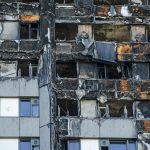Posted on March 3, 2020 in General Info

Combustible cladding ban set to be extended to buildings with four or more storeys
A ban on the use of combustible cladding on high-rise buildings is set to be extended to cover all buildings with four or more storeys (or +11 metres in height) under plans the government is putting out to consultation.
Housing secretary Robert Jenrick gave an update on the Building Safety Programme to the House of Commons on 20th January 2020, telling MPs that although the government banned the use of combustible materials in the external walls of new schools, hospitals, care homes, student accommodation and for residential buildings of more than 18 metres in height in December 2018, they now plan to go significantly further, by lowering the 18 metre height threshold to at most 11 metres.
The announcement was made as part of a raft of new measures being proposed to improve fire safety in high rise buildings in the wake of the Grenfell Tower fire, including the creation of a new building and safety regulator and the appointment of a chief inspector of buildings to speed up remediation work.
Building owners are responsible for ensuring their buildings are safe, but recent high-rise fires, including one in a block of student flats in Bolton in November 2019, have highlighted that many building owners have still not taken sufficient measures to ensure the safety of residents in buildings at all heights.
The Ministry of Housing, Communities and Local Government (MHCLG) and the Home Office have identified more than 400 high rise buildings with unsafe ACM cladding which has an unmodified polyethylene core, which the ban states should now not be used on buildings of any height. Councils will be expected to start enforcement against building owners who have not started remediation work to remove unsafe ACM material from their buildings by the end January 2020.
Categories
- Building Maintenance
- Cleaning
- Electrical
- Gardening
- General Info
- Our Service
- Pest
- Security
- Uncategorized
- Waste Solutions
Archive
- April 2024
- March 2024
- February 2024
- January 2024
- December 2023
- November 2023
- August 2023
- April 2023
- February 2023
- January 2023
- December 2022
- November 2022
- October 2022
- September 2022
- August 2022
- July 2022
- June 2022
- May 2022
- April 2022
- March 2022
- February 2022
- January 2022
- December 2021
- October 2021
- September 2021
- August 2021
- July 2021
- June 2021
- May 2021
- April 2021
- March 2021
- February 2021
- January 2021
- December 2020
- November 2020
- October 2020
- September 2020
- August 2020
- July 2020
- June 2020
- May 2020
- April 2020
- March 2020
- February 2020
- January 2020
- December 2019
- November 2019
- October 2019
- September 2019
- August 2019
- July 2019
- June 2019
- May 2019
- April 2019
- March 2019
- February 2019
- January 2019
- December 2018
- November 2018
- October 2018
- September 2018
- August 2018
- July 2018
- June 2018
- May 2018
- April 2018
- March 2018
- February 2018
- January 2018
- December 2017
- November 2017
- October 2017
- September 2017
- August 2017
- July 2017
- June 2017
- May 2017
- April 2017
- March 2017
- February 2017
- January 2017
- December 2016
- November 2016
- October 2016
- September 2016
- August 2016
- July 2016
- June 2016
- May 2016
- April 2016
- March 2016
- February 2016
- January 2016
- December 2015
- November 2015
- October 2015
- September 2015
- August 2015
- July 2015
- June 2015
- May 2015
- April 2015
- March 2015
- February 2015
- January 2015
- October 2014
- May 2013
- April 2013
- November 2011
- September 2011
- June 2011
- January 2011
- December 2010
- November 2010

